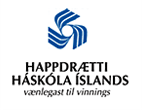Answer
Most of Iceland's first settlers were certainly unfamiliar with geothermal energy, so Iceland's hot springs must have astonished them. Placenames indicate that they tended to mistake the steam of hot springs for smoke; many geothermal sites have the element reyk- (smoke) in their names, while the element gufu- (steam) occurs in few placenames, and they rarely have anything to do with geothermal energy;
Landnámabók (the Book of Settlements) explains the derivation of such names from settlers whose name or soubriquet was Gufa.
Yet the Icelandic sagas tell us remarkably little about the first settlers' encounters with these unfamiliar phenomena - and indeed about their experience of volcanic eruptions. Tradition appears to have been a major influence on what was recounted in sagas. But when written sagas appeared, about three centuries after the settlement of Iceland, two forms of utilisation of geothermal resources were mentioned, as a matter of course.
On the one hand, people bathed in warm springs. This is mentioned in the sagas of Icelanders - for instance in
Laxdæla saga (The Saga of the People of Laxárdal), in the context of events dated around 1000 AD. Of course we cannot be sure that the saga account is historically true, yet there is no particular reason to doubt it; and people are known to have bathed in warm springs in the 12th century. For instance, Bishop Ketill Þorsteinsson of Hólar died when bathing in the warm springs at Laugarás (= Warm Spring Outcrop) in Biskupstungur, on a visit to the see of Skálholt in 1145. This is recounted in the saga
Hungrvaka, which can scarcely have been written more than half a century after the event. The 13th-century scholar-chieftain Snorri Sturluson is also said to have had a warm pool at his home at Reykholt, west Iceland, and so on. The pool known as Snorri's Pool in Reykholt is unusual in being man-made, supplied with hot water piped through a rock-lined conduit; in most cases the old Icelanders made use of natural hot pools.
 Snorri's Pool in Reykholt.
Snorri's Pool in Reykholt.
The other application for natural hot water was for washing laundry. At Reykholt, women brought hot water from the springs to the farmhouse in such a large pot that they had to carry it hanging from a pole between them. In Skagafjörður in the north women took their laundry to the hot springs; women from many different farms met up there, and took shelter in buildings by the springs. These were everyday events, only mentioned in the saga because they provided a context for demonstrating the sanctity of Icelandic saints: at Reykholt a woman fell into the hot spring; thanks to prayers to the home-grown Icelandic Saint Þorlákr, she suffered almost no harm. In Skagafjörður, a woman's shoes were carried off by a raven, but when she invoked Bishop Jón Ögmundarson the Holy, the bird returned them.
Þorgils saga skarða, one of the sagas of the
Sturlunga compilation, tells of a woman washing her laundry at the Lýsuhvoll warm springs on Snæfellsnes in west Iceland; she is mentioned because her husband took offence when Þorgils flirted with her on a visit to the springs. Perhaps the utilisation of geothermal energy is under-represented in the sagas because it mainly concerned the women's domain. Nonetheless, geothermal resources were clearly under-utilised.
The use of natural hot water probably remained more-or-less the same over the centuries. For instance, Bishop Þórður Þorláksson's description of Iceland, published in 1666, states that the Icelanders believe that bathing in warm springs is good for the health. Warm springs and bathing are mentioned in
Travels in Iceland by Eggert Ólafsson, and various other 18th-century publications. But hot springs are not generally counted among the resources of farms at this period - not, for instance, in the
Register of Estates compiled in the early 18th century by Árni Magnússon and Páll Vídalín. In the Biskupstungur district of south Iceland, which abounds in geothermal resources, hot springs are scarcely mentioned. But the register says of Laugarás: "The hot springs here mean that less firewood is needed, but on the other hand livestock dies in them from time to time." This may indicate that it was not necessary to heat water for washing, wool for instance; and perhaps the hot water from the springs was also used for cooking.
In 1773-93 salt was refined at Reykjanes (= Smoky Headland) in the West Fjords, by boiling sea water in the hot water from the springs. This was a public enterprise funded by the royal treasury, and unique in Iceland at the time.
In the 19th century, use of the "washing springs" at Laugarnes (= Warm Spring Headland, now within the city of Reykjavík) was first placed on an organised footing. In 1832 the first shelter for laundrywomen was built. By the mid-19th century potatoes were being cultivated in the warm earth of geothermal areas in many parts of the country. But it was not until the 20th century that hot water was first piped into homes for heating. The pioneer of such geothermal heating was probably Stefán B. Jónsson of Suður-Reykir (= South Smokes) in Mosfellssveit north of Reykjavík, in 1908; three years later Erlendur Gunnarsson of Sturlureykir (= Sturla's Smokes) in Borgarfjörður, west Iceland, piped steam from a hot spring into his home. In the 1930s, use of geothermal energy for greenhouse horticulture commenced, at Laugardalur in Reykjavík and at Reykir in Mosfellssveit. This marks the beginning of the Icelanders' intensive utilisation of their geothermal resources, which today play a huge role in the nation's energy use.
Translated by Anna Yates.
Image: Islandia - Polska strona i Islandii




